Everyone needs to figure out the hard lessons on their own when it comes to love, money, job, and foreign diplomacy. However, there are certain things you ought to learn from people with more experience, or from those who have fallen on their heads a few times. When learning to ride motorcycles, there is a lot to learn and understand.
From a distance, everything appears to be flowing and effortless, but there is actually a lot going on at once, and it might be perplexing. Fortunately, starting will be the most difficult element of the process as it generally is with anything new. Here is our greatest recommendation for remaining secure as you learn to ride.
Ways to Stay Safe When Learning to Ride
1. Be Ready To Ride Before Hitting The Road (Learning to Ride)
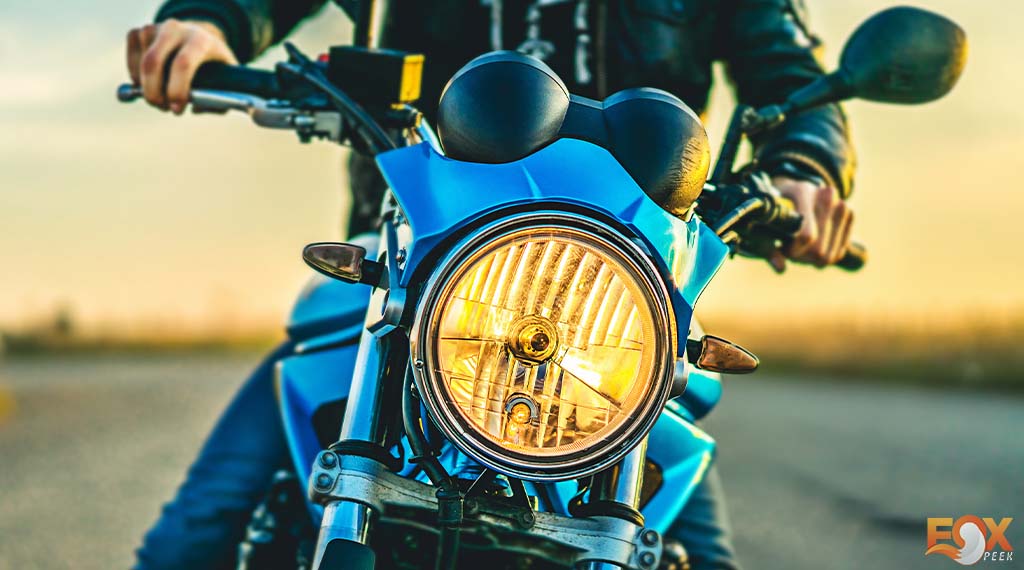
The fact that most states mandate driver training is a very positive step, but n the event that yours doesn’t, please do not use it as an out from receiving some basic instruction before hitting the road. Spend some time being re-familiarized with how everything operates, even if you still recall how to use all the controls from a Mini Trail 50 from 10 years ago. Even a weekend spent riding TT-R125s around in the dirt or spending a day or two at an MSF course, for example, is ideal.
Rather than setting off into traffic, it is a much better idea to bring your bike to a large empty parking lot, and get your riding bearings. It will allow you to adjust to directional changes through countersteering, test the sensitivity of your front breaks, and get a hang of leanings by riding around in loops around some cans or cones.
2. Get To Know Your Bike (Learning to Ride)
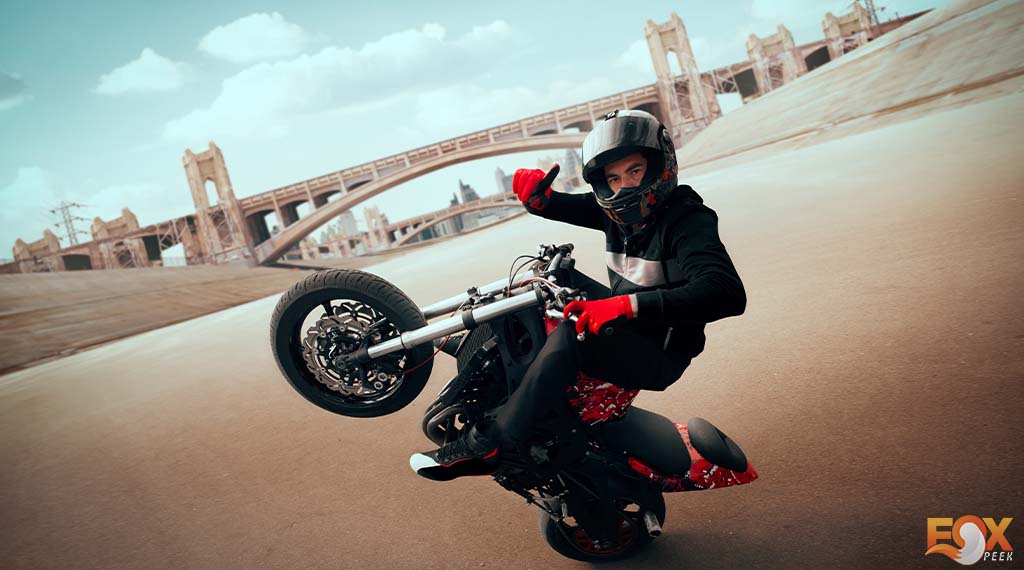
You should either think about getting a new bike or have a highly skilled mechanic inspect the secondhand bike you’re considering. I remember visiting a local Suzuki shop around 1980 when I first started riding on my then newly-acquired Suzuki GS550. It was pointed out to me that the axle clamp responsible for keeping my front wheel attached was absent.
I asked if I needed it. They said that it was only useful if I didn’t want to front wheel to fall off. And you don’t want to know how I learned about fork tubes and bent triple clamps. I certainly wouldn’t want to experience issues with those or any other problems when riding.
While we love propping up motorcycle sales, if you are new to the machine, there’s a lot to be said about knowing everything on your bike is in working order, including new controls that perform as intended, are friction-free, and give you the best possible control. After riding a brand-new motorbike, you’ll at least consistently be aware of how things should feel. Due to the Great Recession, many fantastic new bikes are now available for around $5,000.
If you’re buying secondhand, look find a local dealer or independent bike shop online to give your new machine a complete inspection to ensure everything is in working order. In a perfect scenario, you would take that colleague or mechanic to examine the bike you are looking to purchase. Your brakes must function flawlessly. In the dark, your brake light and taillight are crucial. Etcetera…
3. Make Sure You Are Visible (Learning to Ride)
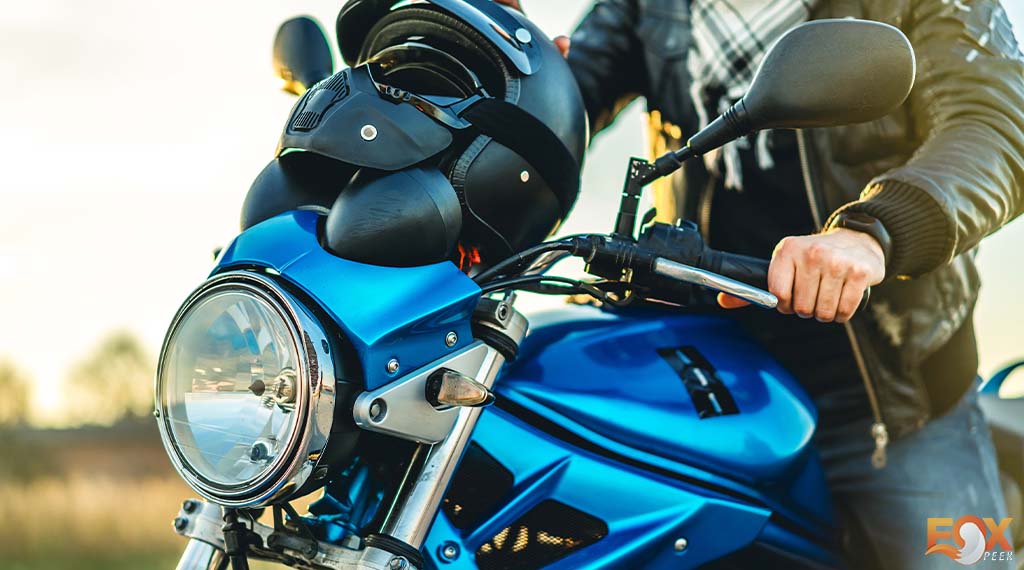
We poked fun of him for it, but former Motorcyclist magazine EiC Art Friedman would only ride in a size XXL bright orange Day-Glo Shoei. If he was going for a discreet look, this was not the way to do so. Whether we are just too forward-fashioned, or just not clever enough to notice, anything with a high visibility band (such as a hi-viz helmet), makes us visible on the road. Since most motorcycle accidents occur when cars turn in front of us, it is crucial that we be easily seen on the road. If you’re still developing your motorcycling sixth sense, make yourself more visible to prevent that.
Fluorescent clothing is still a good idea as you gain experience, but it is even more important as you learn not to become a statistic. You can find a ton of choices when you Google Hi-Viz motorcycle gear.
4. Pace Yourself (Learning to Ride)
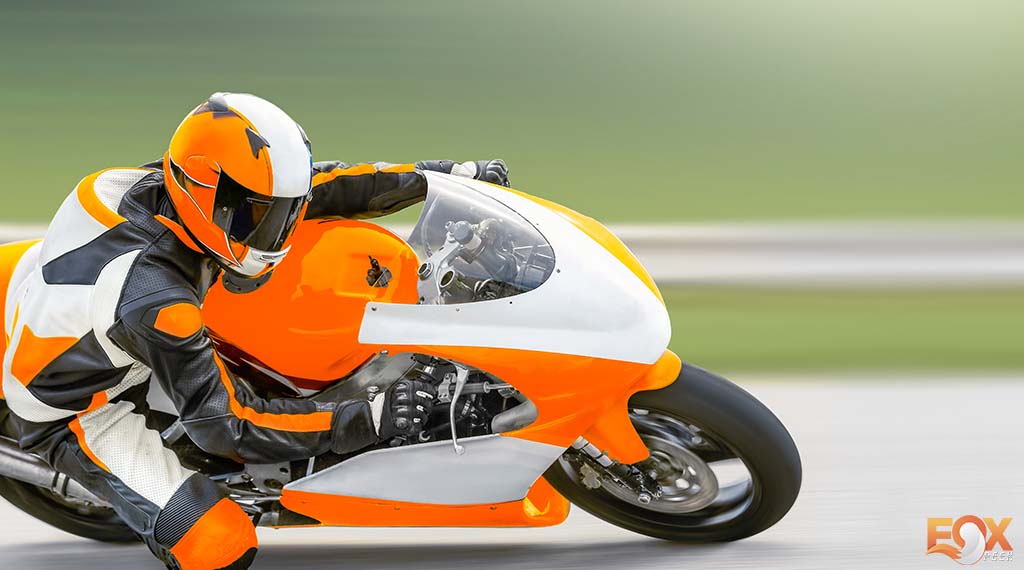
If you’re riding with a group, on dirt, pavement, or whatever, you might be tempted to ride at the pace of the guy ahead of you. Trying to figure out how one person can go faster than the other, under the same conditions and sometimes on the same equipment, is what keeps motorcycle racing interesting. Consider learning to ride as a sport. It’s not like you’d walk onto a tennis court and think you could beat Rafael Nadal.
When you start to feel like you’re riding over your head, don’t try to keep up with the group. Everyone in your company would much prefer to wait for you at the upcoming intersection than have to go back and rescue you from a ditch, trust me. After the ride, it is much nicer to sit down with the individual whose riding you appreciate and enquire how he or she developed their expertise. That individual will happily share their learning experiences.
5. Be Proactive Rather Than Reactive (Learning to Ride)
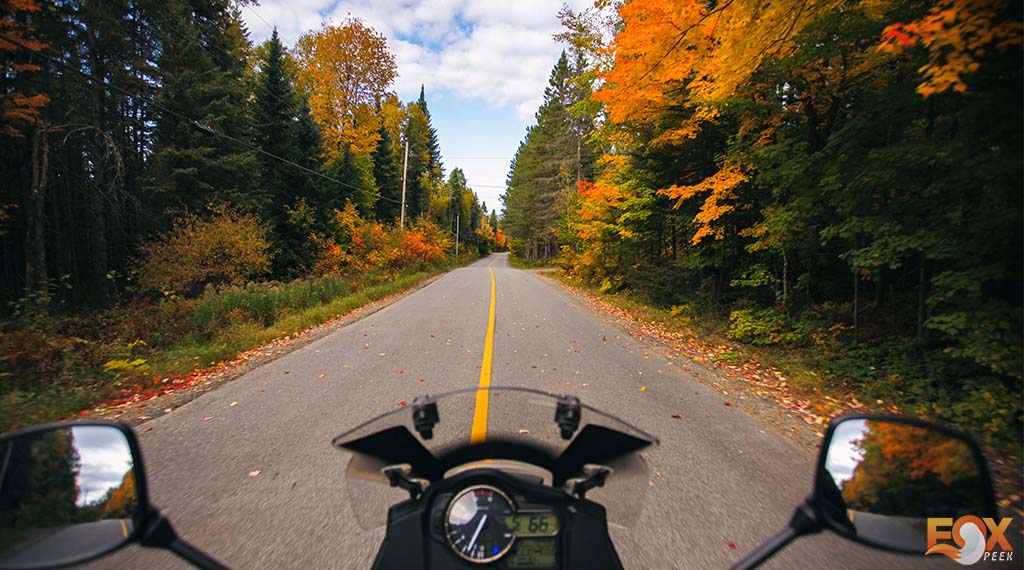
There are two schools of thought when it comes to riding, and I belong to the one that prefers to consistently drive a little bit faster than the flow of traffic on multiple-lane highways because I feel safer approaching vehicles from behind than coming up on my tail. For whatever reason, most of us sportbike enthusiasts would rather deal with things that are in front of us than those that are behind us: the past is the past, after all.
Many other riders prefer to “cruise” at a more leisurely speed, which is something the rest of us also do on occasion on slower-moving or slower bikes. Please stay in the right lane and pay even more attention to your mirrors than you normally would—which should always be a lot—when you are traveling slower than the majority of traffic.
You never want to be caught off guard or by surprise, irrespective of your bike’s speed. Though you feel in control, not everything is in your power to wield, such as an unsuspecting rear hit. Try to avoid a situation where that happens to you. If a truck is coming in your mirrors, perhaps your escape route is between lines of cars, unless you are a California rider.
6. No Drinking Behind The Handlebars (Learning to Ride)

If a driver is inching up on your back tire, move to the right and urge them to pass. You should condition yourself to check your mirrors every five or ten seconds. even better, when there are gaps in the traffic, continue weaving ahead through them like a shark in the surf. When you’ve just passed someone merely a few feet away, drivers can’t help but see you. However, double-check your mirrors to make sure you didn’t just drive past a furious maniac who has a fear of motorcycles.
There is no need to explain the fact that you should never be under the influence of drugs or alcohol when operating a motorcycle, as they impair your ability to make sound decisions. Painfully predictable data link intoxication to motorcycle accidents. There is just no justification in the era of Uber and couch surfing for this.
7. Brush Road Frustrations Off Your Shoulder (Learning to Ride)
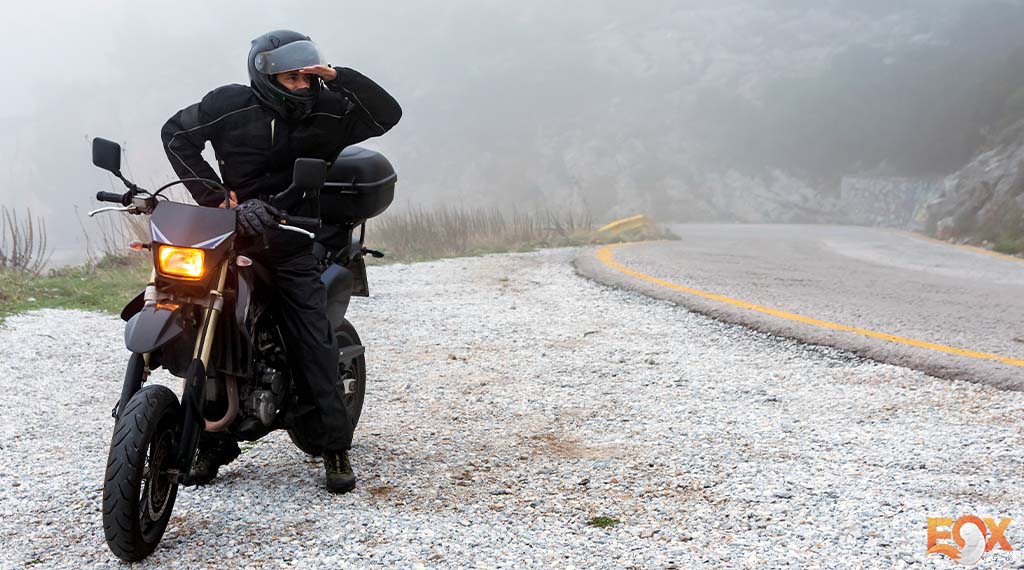
It’s better to just let it go and turn the other cheek if someone upsets you on the road. The motorcycle often loses in car-on-motorcycle conflict, so instead of flipping the birdie, I myself will approach that person, flip up my modular, wave to them, smile broadly, and possibly blow them a kiss. Cruel and angry individuals, especially those well aware of their wrongdoing hate few things more than someone killing them with kindness. Then, while they sit in traffic in their car, I take off on my motorcycle.
In a similar spirit, you shouldn’t proceed merely because the light is green. It implies looking both ways and checking for clear traffic before moving forward because many drivers rush past yellow and even red lights, and you don’t want to end up as their hood ornament. Riding a motorcycle if angry, unyielding, and self-righteous is not recommended. On a motorcycle, what could seem like a little collision might leave you dead or seriously injured.
Don’t assume that following the traffic laws will always keep you safe either. You must always uphold your blast shields, which rapidly become second nature and sometimes even empowering. This of your motorcycle as a superpowered beast, so you’ll have to forgive the mere mortals stuck in the unfortunate confines of their vehicles. Soon you will learn to anticipate many foolish maneuvers, making you more ready to deal with them.
8. Keep Your Distance (Learning to Ride)

Avoid following too closely so that you aren’t smacked in the face shield when the vehicle in front of you goes over an object that just fell off the truck in front of it. Keep your distance so you have a chance to react, and even if you happen to live in a place where lane sharing is not approved, move to the side of the lane you’re in so you can see farther up the road, between the rows of vehicles. In this manner, you might have seen the falling object dislodging and moving two lanes over before it fell and jammed the traffic.
Essentially, your goal is to try to always position your bike so you can see as far ahead as possible, keeping an eye out for swerves, habitual lane meanderers (usually due to texting), and brake lights. A good reason to get a nice new bike is its bright headlight that illuminates the road amply for you. Just don’t outrun the light’s reach while you’re driving in the darkness.
9. Always Remember That You Are Difficult To See (Learning to Ride)
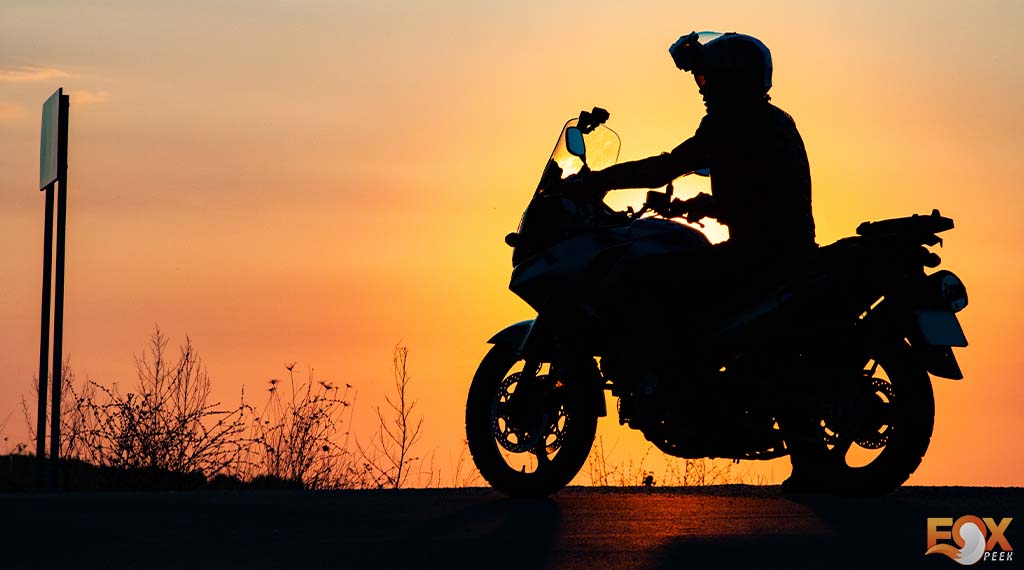
On a motorcycle, you might as well be an apparition on the road. You are basically invisible to everybody. Once you accept that reality you can be better prepare yourself for automobiles to pass you on the left, shift into your lane in front of you, flick cigarettes and debris into your face, and spill soft drinks on your lap. You consent to all of that happening to you in exchange for the enjoyment of ground-bound flying anytime you need to travel.
While any spot you are in is a “blind spot,” there are some particularly obvious ones, and you should avoid riding in them. When coming up on an intersection, look both ways, and learn to read small cues from vehicles and drivers to help you identify which to keep an eye on or outright avoid.
However, avoid riding in plainly blind regions. At junctions, slow down and make an effort to look both ways. After some practice, you’ll be able to read tiny cues from drivers and their vehicles and will be able to identify which ones you should literally avoid or at the very least keep a close watch on. You’ll start to feel less invisible than you did at first. Your capacity to anticipate and cope with an unfriendly road will gradually change. You eventually stop feeling invisible and start feeling invincible.
10. Protective Gear Is A Must (Learning to Ride)
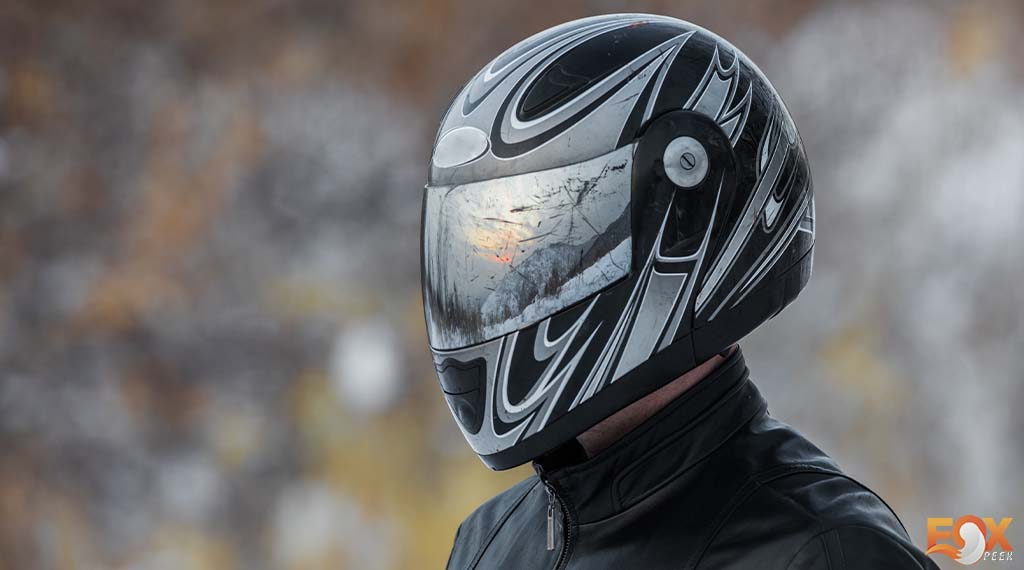
Where are those gloves and helmets?? Are you wearing CE-certified boots? Are those boots CE-certified, too? No matter how cautious and hard you try, unforeseen events occasionally still occur. A snapped bungee cord locks your back wheel up, a deer leaps into your lap, y our front tire is blasted by a meteorite. Hey, it can happen! Your job is to mitigate as much harm as possible to your bike, but even more importantly to yourself.
All The Gear All The Time (ATGATT), is a moniker for many riders. However, that isn’t always realistic for everyone. Too many of us will take chances. I mean, we aren’t saints after all. However, the reason I recommend you wear a proper helmet is that I split my skull open when learning to drive, and as a disobedient 20-year-old idiot, I doubt I would have been wearing a helmet if the law hadn’t required me to do so.
As I skidded over the frozen pavement, I heard a crack and a “skriiiish” sound that I can still hear. I know for certain that I wouldn’t be here today had it not been for the gear that protected me. Helmets have subsequently saved my head at least, well, there isn’t time to count right now the number of times.
You might as well pack gloves as well if you’re going to be wearing a helmet. Each hand has 27 bones and 8,032 tendons and ligaments. After you jack them up or simply scrape them and wait for the scabs to heal, you’ll be shocked at how difficult it is to perform tasks that you used to take for granted.
And while we’re at it, ask anyone who has broken an ankle while riding a motorbike whether they ever wished they had been wearing boots or at the very least high-top sneakers with some kind of ankle protection. These are the essential conditions. A good textile or leather jacket is best for outerwear. Kevlar clothing is a great concept as well. Now, my people, go out and ride!
Conclusion:
In conclusion, learning to ride a motorcycle can be a fun and exciting experience, but it’s essential to prioritize safety. Following the top 10 ways to stay safe when learning to ride can reduce your risk of accidents and help you enjoy the ride. Now that you’ve learned about the basics of motorcycle safety, it’s time to take your knowledge to the next level.
Be sure to read our next article, “Top 10 Weirdest Motorcycle Camping Essentials You Didn’t Think About,” for some unique and unexpected camping essentials to make your next motorcycle trip even better.
Frequently asked questions:
How to learn to ride a motorcycle?
1. Take a motorcycle safety course to learn the basics of riding and proper safety techniques.
2. Practice riding on a smaller, less powerful bike before moving on to a larger one.
3. Get a motorcycle license and always wear protective gear while riding.
How to learn to ride a bike?
1. Start by learning to balance on the bike while it is stationary or with the help of support wheels.
2. Once you feel comfortable with balancing, start moving forward with the help of a friend or family member holding the back of the seat.
3. Practice riding in a safe area and continue to work on your balance, braking and steering.
What age do kids learn to ride a bike?
1. Children typically learn to ride a bike between the ages of 3 to 8 years old.
2. However, the age at which a child learns to ride a bike can vary depending on physical coordination and interest factors.
3. It’s important to remember that every child develops at their own pace.
How hard is it to learn to ride a motorcycle?
Learning to ride a motorcycle can be challenging, but it can be accomplished with proper instruction and practice. It can take some time to become comfortable and confident on a bike, but anyone can learn to ride with dedication and patience. It’s also essential to always wear protective gear and obey traffic laws to ensure safety while riding.
Is it hard to learn to ride a motorcycle?
Learning to ride a motorcycle can be challenging, but it can be accomplished with proper instruction and practice. It can take some time to become comfortable and confident on a bike, but anyone can learn to ride with dedication and patience. It’s also essential to always wear protective gear and obey traffic laws to ensure safety while riding.






